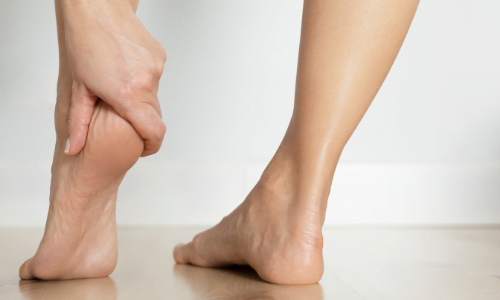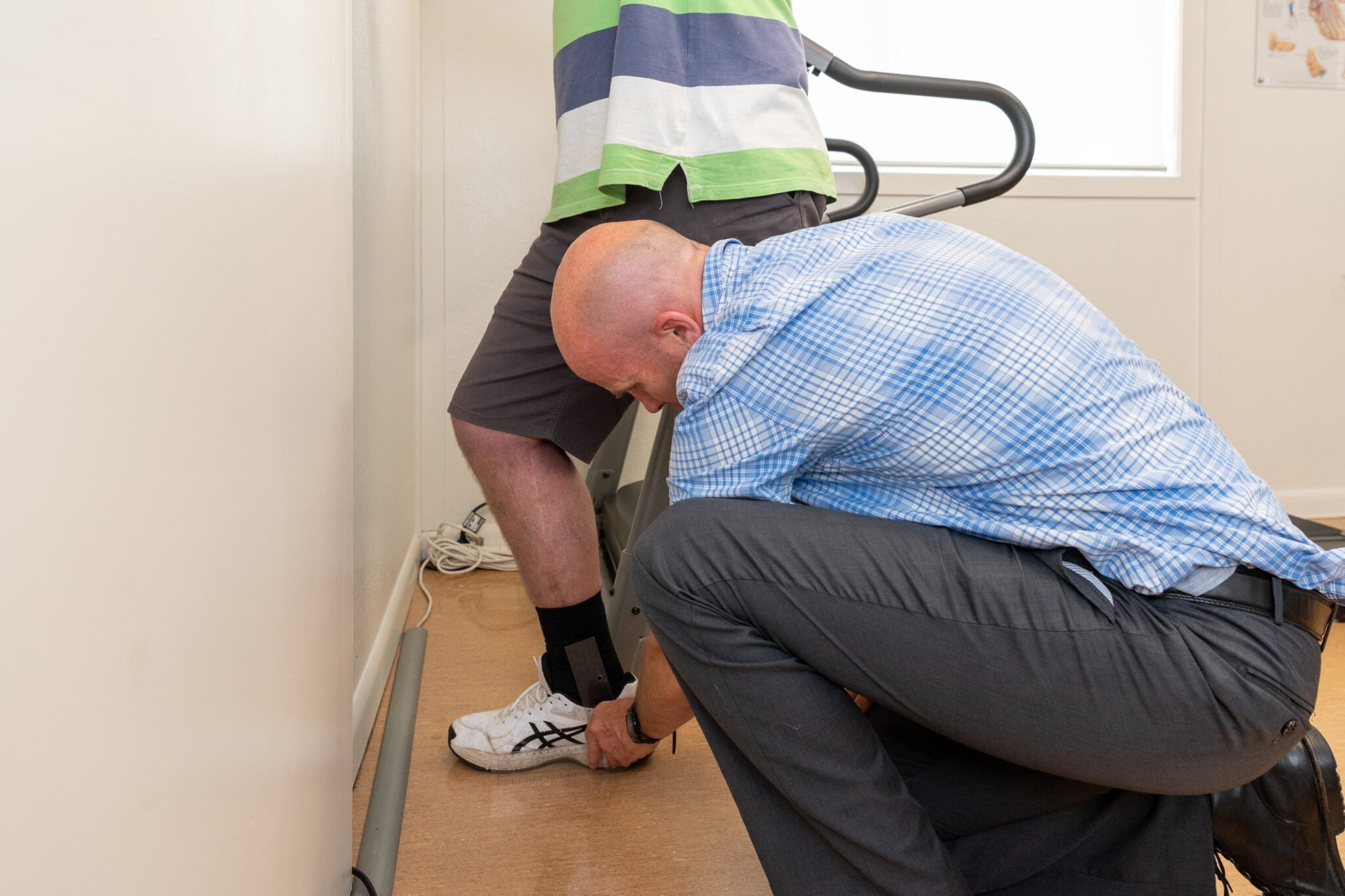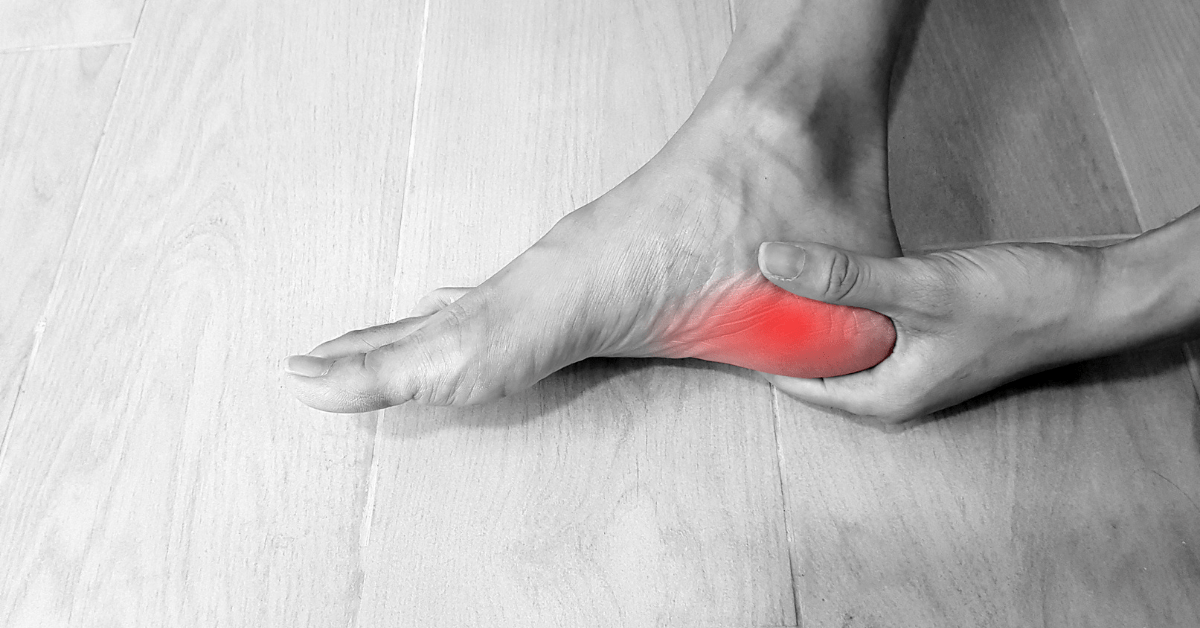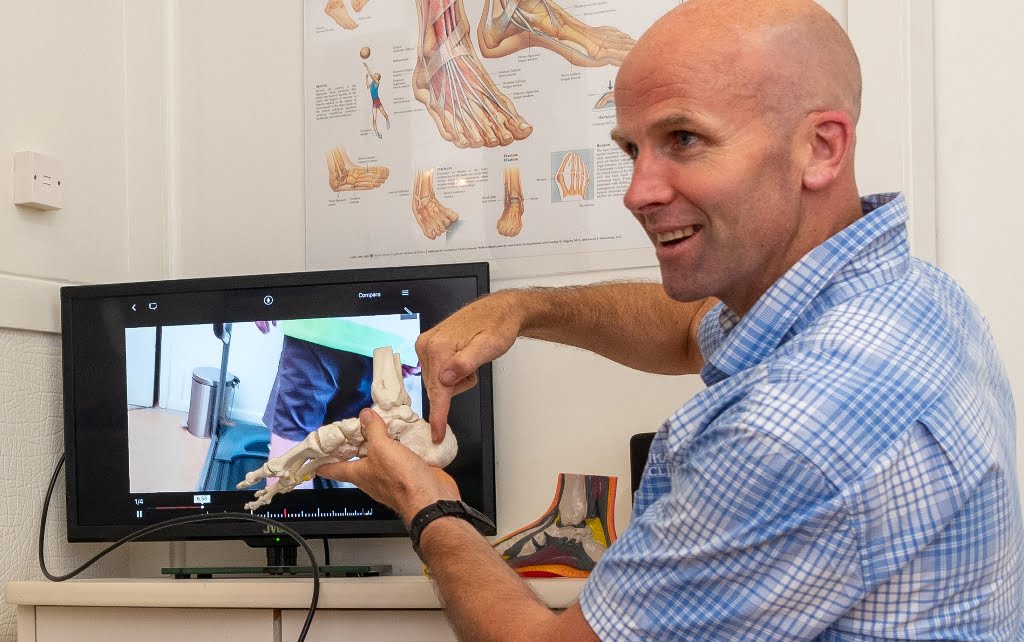Heel Pain Myths: Are You Mistakenly Believing One Of These?
Heel pain: it’s a common problem our podiatrists see and treat every day, here in our Hamilton clinic. For some of our patients, heel pain is debilitating, affecting their ability to work and live comfortably. Others put up with mild to moderate pain around their heels for months, on and off. Some experience that classic sharp ‘first step’ pain when they stand first thing in the morning (or up after resting with their feet up) almost daily.
With Heel Pain accounting for up to 15% of all foot complaints that require professional care, many people are searching online for answers, remedies and quick-fix tips to help. As such, there’s a lot of common myths and misconceptions floating around about heel pain, and unfortunately, some of them may actually risk worsening the problem instead of helping.
So what should you know? Today, our podiatrists set the record straight on seven common heel pain myths - and show you the best steps you can take to get rid of your heel pain for good.
Myth #1: Heel Pain is Always Plantar Fasciitis
With there being so much information online about “plantar fasciitis heel pain”, it’s easy to think that’ll be the likely cause for you too. But there are plenty of other causes of heel pain, including Achilles injuries, nerve entrapments around the ankle (such as tarsal tunnel syndrome, where the pain radiates down to the heel), a stress fracture to the bottom of the heel bone, and damage to the fat pad at the bottom of the heel, to name a few. There’s also another soft tissue condition that has very similar symptoms to plantar fasciitis but doesn’t involve the plantar fascia, called abductor hallucis tendinopathy, that is commonly misdiagnosed.
This is why health professionals always recommend getting a proper diagnosis from your podiatrist, and following a personalised treatment plan. Starting to follow advice for treating plantar fasciitis without having it means that you may miss key actions you need to best care for your feet and instead be accidentally prolonging your symptoms or even worsening the problem.
Plantar fasciitis is a very common cause of pain at the bottom of the heel. In our clinic, we estimate that over half of patients who come in with heel pain have plantar fasciitis. Plantar fasciitis describes damage to a thick connective tissue band called the plantar fascia, that attaches to the bottom of the heel bone and spans out across the arch to connect to the toes.



Myth #2: Rest Is The Best Cure For Heel Pain
Resting your feet when they’re in pain will help reduce your symptoms, but it’s far from a cure, and it can’t be the only thing you’re doing. Let us explain: by not walking on and loading the injured tissue or area, you’ll feel less direct pain and there’ll be less aggravation, which will encourage your swelling and symptoms to reduce and support the repair process. Unfortunately, the moment you stop resting and stand back up, you start loading the area again and the pain restarts. Not only does continuing to load a damaged tissue delay its ability to heal, but if the cause of your pain is something like a stress fracture, then you may also worsen the problem by continuing to apply pressure on it without the right preventative measures.
Resting more (known as relative rest) and adjusting the type of exercise you’re doing throughout your recovery period is a good idea, and something we talk about with our patients. But it doesn’t work alone - not in the long-run, anyway. If you’re wanting long-lasting results and to help reduce the likelihood of the problem recurring, you need to understand the causes of your pain through an assessment with your podiatrist, and address these. We will sometimes refer to these as ‘drivers’ of your problem and it is really important that we isolate and address these as they will differ for everyone.
Myth #3: Heel Spurs Are Causing My Heel Pain
While heel spurs can cause heel pain, the actual rate of heel pain being attributed to a spur is low - approximately one in twenty cases, based on what we see in our clinic. For most people, heel spurs are what we call an incidental finding, meaning that while we are investigating an actual issue, we also find a heel spur - but the two are not necessarily related. The American Academy of Orthopaedic Surgeons estimates that for people who are confirmed as having heel spurs (which is done with x-ray), only 5% experience any actual spur-related heel pain. Unfortunately, the term “heel spur” has become so popular when discussing heel pain and plantar fasciitis that the misconception has arisen.
To further support the case, research found that when looking at patients with heel pain in only one foot, almost half of these people had heel spurs in both feet, while 39% had no heel spurs in either foot. A few even had a heel spur in the opposite foot to the one they were experiencing their pain in. The bottom line? The connection between heel spurs and heel pain is much weaker than it is made out to be. If your heel pain is failing to resolve using traditional treatments, then it may be worthwhile to investigate heel spurs among other causes for your enduring symptoms. Until then, follow the instructions of your podiatrist based on their assessment of your diagnosis and underlying causes.
Myth #4: I Can Fix My Heel Pain With Pain Killers
This one is much like ‘rest’. The job of painkillers is to reduce your sensitivity to pain, so you feel more comfortable for a short period. There is nothing healing or restorative about painkillers, and in fact, if you continue to walk on and load a damaged tissue because you temporarily can’t feel the pain, then you risk making it worse. Do use painkillers if you need help managing your pain. Don’t use painkillers to fix your heel pain - they won’t.


Myth #5: Heel Pain Will Go Away on Its Own
There are very few cases that we see significant heel pain just go away on its own. Here’s why, and it’s reflected in the age old saying “if you change nothing, nothing changes”. Having heel pain means you’ve sustained damage to a tissue. In many cases, this isn’t from a single incident (which we refer to as ‘trauma’), but from repeated overloading and stress over time. Often, it’s related to the combination of the training activities you’re doing, your foot posture and biomechanics and your footwear, among other factors. Without addressing these factors, the loading doesn’t change, and even if you have periods of the pain feeling better and worse (likely related to how much time you’re spending on your feet that day), you won’t have set your body up for “success” to be able to heal and repair properly. That’s why most people struggle with heel pain on and off for weeks and months - until they commit to a treatment plan designed to allow their injury to heal and repair.
There are definitely times where you may experience minor heel pain from a long day on your feet and it will resolve, but if you’re in the majority with a significant injury, it’s a lot more tricky.
Myth #6: My Flat Feet Are The Cause Of My Heel Pain
There’s a notion out there that flat feet are inherently bad. While we agree that for some people, the cause of their heel pain is because their flatter foot posture significantly overloads their plantar fascia tissue past the point that it can handle and damage occurs, this is not the case for everyone with flat feet. Even more so, for those where flat feet play a role, there are often other factors that add to the equation, such as wearing unsupportive shoes, spending long hours on your feet, or having a tight Achilles tendon.
Having flat feet doesn’t sentence you to lifelong heel pain. There are many people with flat feet who don’t get heel pain, and plenty more with normal or high arches who do get heel pain. This is where an assessment that shows the real cause of your heel pain is invaluable, and will provide you the best treatment path forward for your circumstances.
Myth #7: Foot And Heel Pain Is Just Part Of The Ageing Process
Growing older is synonymous with sayings like “things aren’t working like they used”, as well as explaining away aches and pains with age. While ageing does come with its challenges and considerations, heel pain is not one of them. At any age, treating heel pain is a matter of diagnosing the cause, and then treating it, which is why many of our patients are aged over 50 and still have the same treatment outcomes as their younger counterparts. In some cases, such as with systemic conditions like rheumatoid arthritis, it gets more complicated, but the majority of older adults are still able to completely resolve their heel pain with the right treatment approach.
We hope this helps - and if you have any more questions about heel pain based on what you’ve heard, our podiatrists will be more than happy to discuss all of this with you at your appointment.
To book an appointment with our podiatry team here at Waikato Podiatry, call us on 07 838 0003, or use our online booking portal.


